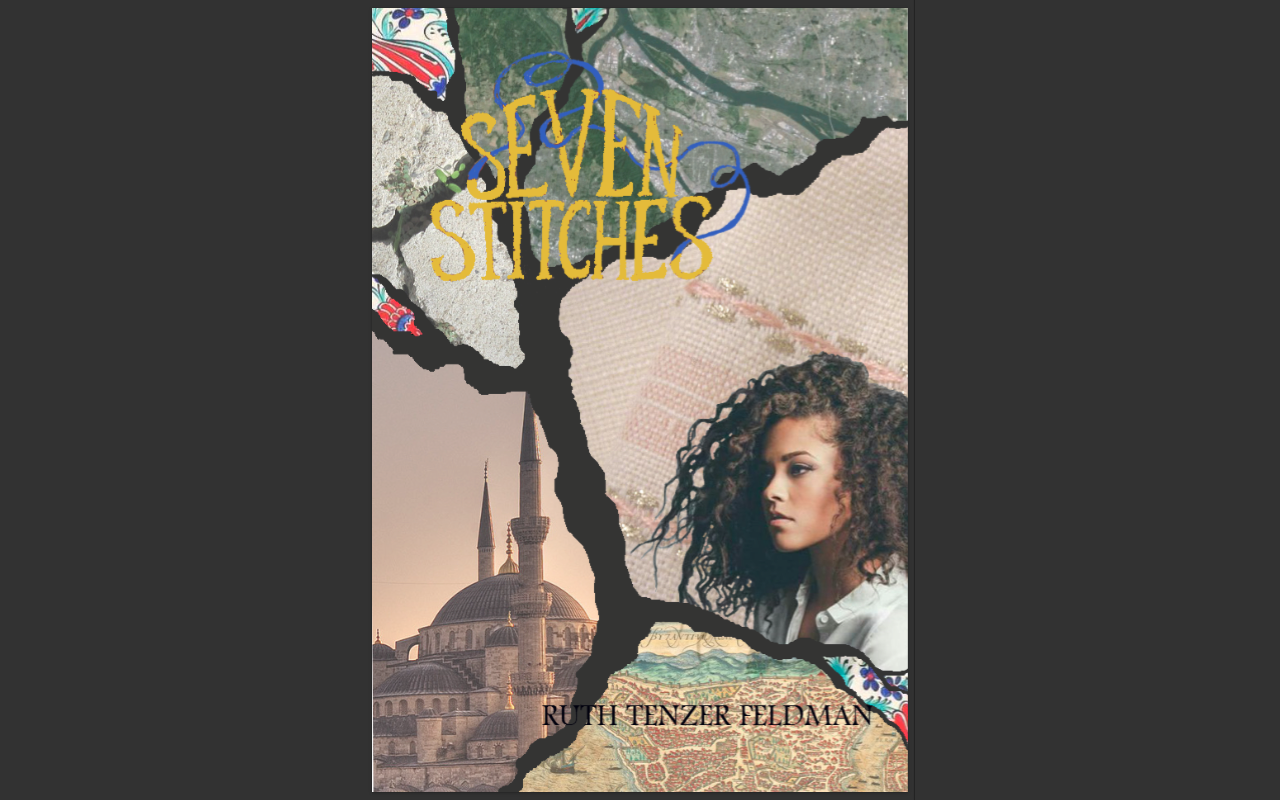During my first term in the book publishing program with Ooligan Press, I was assigned to the Seven Stitches project team. The manuscript was in the middle of a round of editing and was about to go into copyediting. There were still other tasks to do: sending out blurb requests, writing up the press release, making a tip sheet for the sales kits, and (of course) designing a cover.
The design department opened submissions for covers. After having the first two rounds not yield many results, the design department decided to shake things up a bit and organized a group activity with concept prompts. I partnered with Pamela Wells, another Ooligan student. The cover concept we drew was a collage format inspired by All the Birds Singing, by Evie Wyld. We decided that we would each do our own submission. We discussed what images could be used to represent the story. Things that we decided were crucial included Meryem herself, as we’d collectively decided that the main character needed to be on the cover; the image of cracks in the ground to represent the earthquake; a map of Constantinople and Portland, to represent the travelling between two time periods and locations; and other various things to fill up the space. We’d also decided that since our prompt was a collage with space in between the images, we could use those divisions to represent the earthquake cracks as well.
When I first approached this project, I had an idea that the cracks that would separate the images would be evenly edged and each image would act like a shard of a mosaic to make up one image. I confess that at the time, my image-editing skills were next to nothing, and I had never used Adobe Photoshop, only GIMP. I actually ended up making the outlines for the cracks in Microsoft Paint, since I couldn’t find a shape tool that would allow me to make lines in GIMP.
The most challenging part of this assignment was finding an image of a girl that would faithfully represent Meryem. She is a teenage girl who is described as having bronze skin and long, curly, magenta hair. I found a good placeholder image that didn’t make the cover look too much like a fashion photo shoot or movie poster and closely represented Meryem’s ethnicity.
For the fourth round, each cover that had been voted through was assigned to a group, which included the original designer and one or two consultants to help develop it. Leigh Thomas was assigned to mine, and we decided to develop our own versions. After the department and project managers voted on the submissions from that round, voting was opened up to the entire class in the executive meeting. There were three to vote on, including the cover that Leigh had modified, which was then voted as the official cover design. I was tasked with finding someone willing to be the model for the cover. For the previous two books, the cover models were actually Ooligan students. As we were unable to do the same thing for this cover, a friend of mine was willing to be our model, and we did a photoshoot on campus. As of July 6, 2016, the cover is still undergoing finishing edits.
Ensuring that the cover would fully represent the character was paramount in our team’s vision for the cover. Discussion of diversity in publishing and literature, especially in the young adult genre, has been at the forefront of the industry over the past few years. Most notably, the grassroots organization WNDB (which stands for “We Need Diverse Books,” the Twitter hashtag that went viral and brought diversity to light in 2014) has been advocating for more diversity in children’s literature and publishing since 2014. Since then, the discussion has brought to light the complete lack of diverse characters compared with nonmarginalized characters. We were conscious of this issue, and we’re committed to accurately portraying Meryem on the cover.

